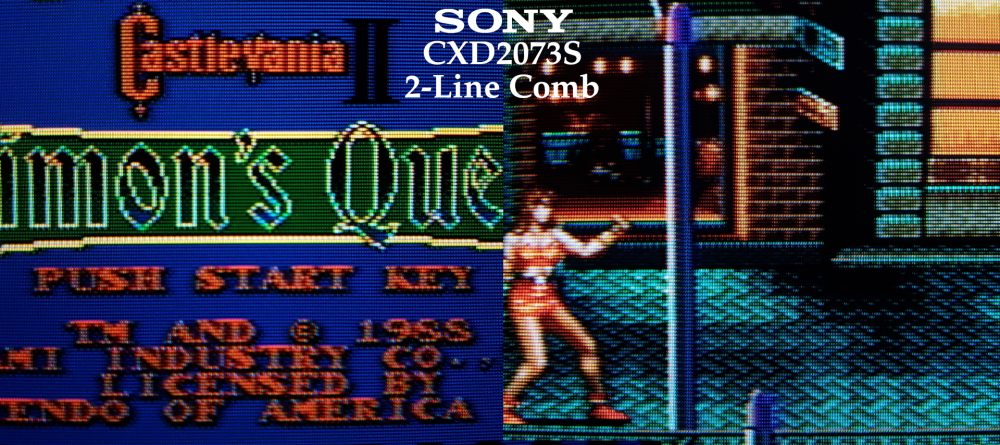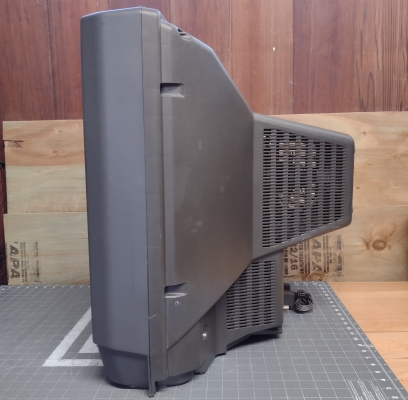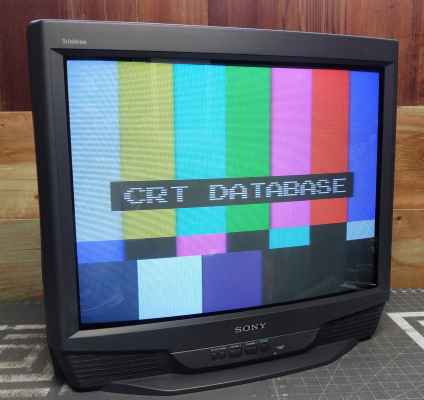Sony KV-27S42
October 2, 2024, 12:50 pm
September 10, 2025, 2:55 am
Summary
One of Sony's last curved Trinitrons, released in 1999 and sold at least as late as 2001.
Manuals
Mods & Repair Guides
Notes
Two other BA-4D models with this design were produced; the KV-27S46 and KV-27S66. These have a second A/V input and Picture-in-Picture.
The jungle chips used in BA-4 and BA-4D chassis Trinitrons are very versatile, and these TVs can be modified for RGB and/or Component video.
The TV in these photos was modified with a SCART input. Normally, it would just have set of A/V inputs, S-Video, and audio out.
Composite 240p Performance
by Eli Krause
For composite decoding this set uses the Sony CXD2073S, a 2-line digital comb filter used in many models from their 1997-1999 lines. As with all 2-line comb filters, the amount of dot artifacting added to 240p content is severe. If the set has an AA-2D chassis, then the set's own internal notch filter can be enabled in the service menu - NOTC 1, which will avoid the horizontal dot artifacts caused by the comb. If the set has a BA-4D chassis then there is no service menu option to enable the notch. But if the set has an s-video input (or if it has been modded for component input), then using a good external notch filter to decode composite instead, and sending that to the set would properly blend all dithering patterns and avoid nearly all dot artifacts. Guide to using an external notch filter with a CRT is here.

Gallery




| Specifications | |
|---|---|
| Brand: | Sony |
| Manufacturer: | Sony |
| Model: | KV-27S42 |
| Series: | KV |
| Viewable Size: | 27" |
| Inputs: | Composite, S-Video, RF |
| Native Resolutions: | 240p, 480i |
| Formats: | NTSC |
| Aspect: | 4:3 |
| Adjustments: | OSD Customer Controls, OSD Service Menu |
| Comb Filtering: | 2-Line Digital |
| Comb Filter IC: | CXD2073S |
| Tube: | Sony Trinitron , A68LML50X |
| Mask: |
Aperture Grille

|
| Pitch: | .75 mm |
| Tint: | Dark |
| Speakers: | Stereo, 5W x 2 |
| Remote: | RM-Y165 |
| Chassis: | BA-4D |
| Weight: | 86 lbs (39 kg) |
| Application: | Consumer |
| Launched: | 1999 |
| MSRP: | 449 USD |
| Country of Manufacture: | Mexico |
| Mods: | RGB via Mux, Component YPbPr |
| Degaussing: | Automatic on Power-on |

 This work is licensed under a
This work is licensed under a